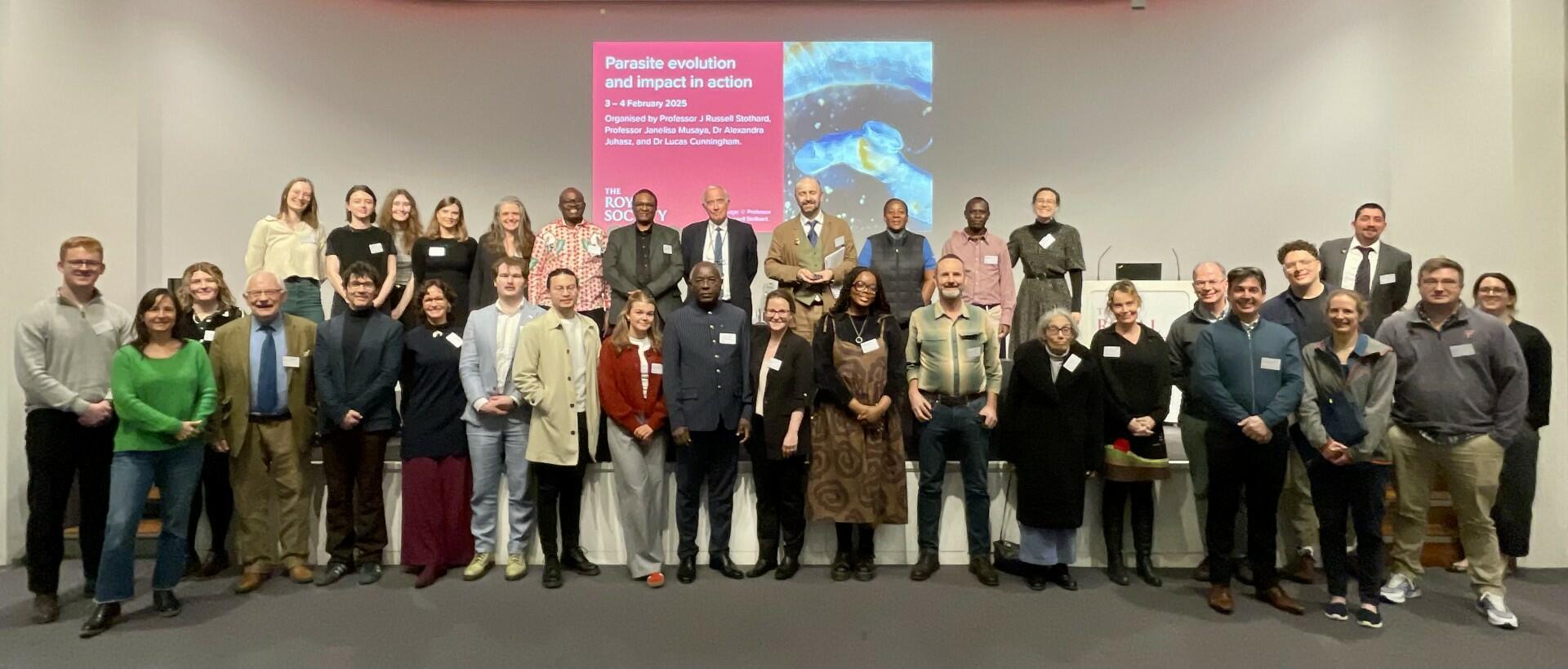
Written by Angus More O'Ferrall and Abigail Cawley.
The Royal Society's recent Science+ meeting, held on 3-4 February 2025, brought together leading experts to discuss parasite evolution in Africa, focusing on hybrid schistosomes. The event was organised by prominent members of the HUGS team, including Professor Russell Stothard, Professor Janelisa Musaya, Dr. Alexandra Juhasz, and Dr. Lucas Cunningham.
Professor Stothard gave an engaging introductory overview of the topic to start the meeting, highlighting the necessity of a One Health approach to address the public health threat posed by zoonotic schistosomiasis. You can watch a video of Professor Russell Stothard's talk and see summaries of the day on the Royal Society website.
The in-person and online audience then heard from a range of experts in both the evolutionary aspects and clinical implications of hybridisation in schistosomiasis. After Professor Musaya gave a comprehensive summary of the HUGS study and epidemiological data from southern Malawi, numerous other HUGS team members gave focused talks.
Dr Alexandra Juhasz presented data on bovine and caprine schistosomiasis in Malawi, showing the audience the innovative GPS tracking approach used to understand animal water contact patterns. Her talk sparked discussions surrounding the difficulties in treating livestock.
Dr Lucas Cunningham shared his expertise in molecular diagnostics, focusing on developing assays to enhance the rapid detection of putative hybrid species. Dr Sekeleghe Kayuni spoke about male genital schistosomiasis (MGS) in Malawi, presenting clinical data linking zoonotic and hybrid schistosomes to genital disease.
In an open short talk, HUGS-affiliated PhD student Dr Angus O'Ferrall presented novel cases of mixed intestinal and urogenital schistosomiasis, highlighting the greater relative abundance of hybrid and zoonotic egg excretion in the stool compared to urine and discussing implications for monitoring intestinal schistosomiasis in zoonotic transmission zones.
Both in a short talk and with her poster, Abigail Cawley demonstrated the process used to identify Schistosoma haematobium x Schistosoma mattheei hybrids by first screening urine filters and then analysing individual miracidia from samples in which zoonotic species signatures were detected. She carried out this work in her recently completed and very successful MRes project.
Additionally, approaches to malacological surveillance and community engagement were presented on posters by Sam Jones and Peter Makaula, who unfortunately could not attend the meeting in person but whose contributions throughout the study have been critical to its success in the sampled communities.
We express our sincere thanks to the Royal Society for hosting the meeting and look forward to formalising meeting outputs in an upcoming Special Issue of Philosophical Transactions B.